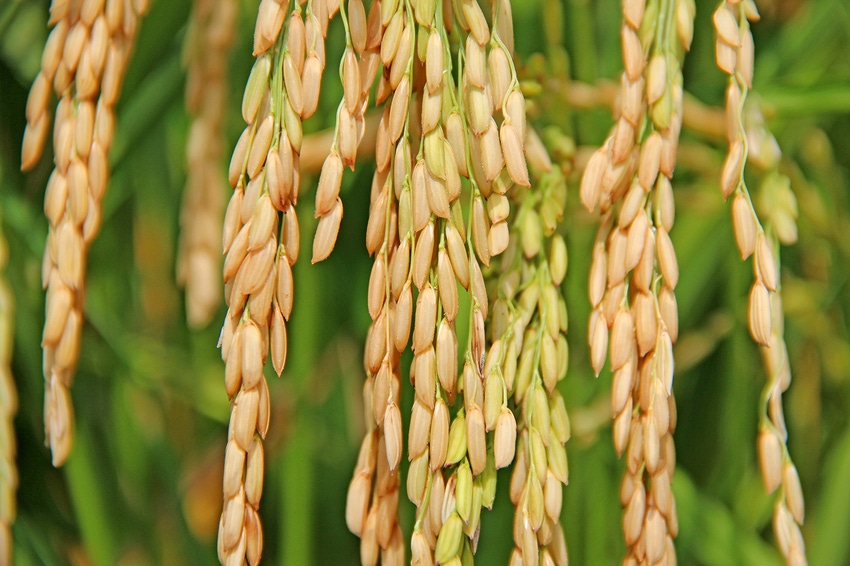
Hybrid rice plantings could expand significantly in coming years
“For the Mercosur (South America), we are at 4 percent today. We think that will jump up to 34 percent by 2035. India is at 7 percent today for hybrid rice, and we think that will move up to 28 percent. The rest of Southeast Asia will be at 35 percent in 20 years." - Michael Gumina
December 8, 2015

Farmers in the United States and China now plant about 50 percent of their acres to hybrid rice, according to Michael Gumina, global CEO for RiceTec Ag, a seed company that focuses primarily on the relatively new type of rice.
If the world population continues to grow at the present rate and the world economy doesn’t falter too badly, growers in both the U.S. and China could be planting 75 to 80 percent of their rice in hybrids in the next 20 years, he says.
That’s on top of gains in hybrid rice in other regions of the world where increasing food production will be a major goal over the next two decades, says Gumina, who was a presenter during one of the latest in the University of Arkansas Division of Agriculture System’s Food and Agribusiness Webinar series.
“When we look out in our crystal ball here over the next 20 years, this is what we are projecting for the market,” he says. “For the Mercosur (South America), we are at 4 percent today. We think that will jump up to 34 percent by 2035. India is at 7 percent today for hybrid rice, and we think that will move up to 28 percent. The rest of Southeast Asia will be at 35 percent in 20 years.”
Gumina, who has been involved in the seed industry for 35 years, says those forecasts will depend on whether his company has success in promoting hybrids in the marketplace. “If we do, if we can show the same kind of hybrid vigor kick, I think the world will certainly grow its percentage of hybrid rice.”
Different lenses
RiceTec is viewing its long-term future in research through three different lenses.
“The first lens is the growing; so yield, tons per acre, ultimately is the measure that people look at,” Gumina notes. “The reduction of risk, whether through disease tolerance, lodging, shattering or abiotic stress, will be key to driving that yield.”
If farmers can decrease input costs, including the amount of water, fertilizer and agricultural chemicals they use, that will be a plus. Earlier maturing rice would also help since earlier rice is less expensive to produce and would create more options for a second crop in some parts of the world.
The second lens involves working with rice millers, “understanding their preference and what they need to be successful. The grain size, the content, what the chalk tolerance is, translucency measures, the idea of gel temp and consistency, these things are on our radar, and I know we need to match the needs to the local mill's requirements,” says Gumina.
“Whole milling is a big piece of our focus, so that these mills can be successful in their economics equation, and then helping them to segment their offerings to customers based off of the quality that each customer is requiring is certainly a part of the future,” he notes.
“So we need to be thinking, even before we plant, who is going to be using these products at the end and how we can provide the raw materials so millers can be successful with these market segmentations down the road.”
Voice of the consumer
The last – “and most important” – voice is the consumer. “Uniformity of cooking is very important to the consumer; texture and aroma is key; and then the idea of sustainable food production, to get to their psyche of doing the right things in the world is also important.”
All those attributes are driven by genetics, he says. “And I think for us to be successful as an industry, information and knowledge are going to be more and more critical for that success.”
Growing rice will become more complicated in the years ahead, in part, because farm-gate prices for rice are not expected to make any major move upward, barring a crop failure somewhere in the world.
“It starts with crop planting – how do we think about how much we're going to produce; what is the mix that we're going to produce; on what assets are we going to produce it; and what is the target we have for our market as we think about it going forward?
“Financial planning, certainly in the future and today, is critical,” he says. “So we think about the banking relationships, the credit relationships that we have, how the farm programs play into these things. And risk management – most of the time when I say that, people are going to think about insurance – but certainly the genetic risks, the planting dates, how you spread your market risk, all of these go into risk management.”
Field by field, acre by acre, yield analysis will be needed so growers can optimize the output and the economic benefit for every acre they farm. Storage, delivery and marketing will be part of maintaining the quality of the product once it’s out of the field.
Industrialization of marketplace
“Supply chain coordination is going to be more and more critical in the future,” Gumina says. “If we think about segmented markets, if we think about industrialization of our marketplace, then we’re going to have to be very, very well coordinated with the entire supply chain so that everybody can reap the benefit, and the end user, in the end, will get exactly what they want.”
He said the University of Arkansas webinars have helped provide context to the global circumstances surrounding rice production.
“I think it helps us all to think about the global situation, where we can find advantage, and also to take that global situation and act locally,” he noted. “So I think it is absolutely critical to us as we move forward.
To view Michael Gumina’s presentation, visit http://www.uaex.edu/farm-ranch/economics-marketing/food-agribusiness-webinars/posts/11-16-15-RiceTec-Michael-Gumina-UA-Webinar.aspx
To learn more about RiceTec Ag, go to http://www.ricetec.com/.
About the Author(s)
You May Also Like





